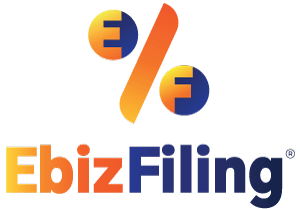
-
May 11, 2022
“What is AMT in Income Tax?”, “What is MAT in Income Tax?”, MAT and AMT Difference
Introduction
Minimum Alternate Tax (MAT) and Alternative Minimum Tax (AMT) is taxation concepts that are applicable for businesses and individuals that pay taxes. Although the MAT criteria are good for organizations, the AMT standards are relevant for individuals. In this article information on “What is AMT in Income Tax?”, “What is MAT in Income Tax?”, And MAT and AMT Differences.
What is AMT in Income Tax?
Alternative Minimum Tax (AMT) is a tax that can be paid instead of the ordinary tax. The AMT rate is now at 18.5 percent (plus applicable surcharge and cess). In an FY (Financial Year), the Alternative Minimum Tax (AMT) is applied on ‘adjusted total income’ when the tax on regular income is lower than the Alternative Minimum Tax on adjusted total income. As a result, regardless of their ordinary tax obligations, persons who are subject to AMT laws must pay AMT.
Provision for AMT (Alternative Minimum Tax)
Every non-corporate taxpayer who has claimed a deduction under section 80H through 80RRB (excluding 80P), (ii) a deduction under section 35AD, or (iii) a deduction under section 10AA will be subject to the AMT requirements. As a result, the AMT requirements do not apply to a non-corporate taxpayer who has not claimed any deductions under the previously mentioned sections. However, the following considerations should be made in this regard.
-
The AMT provisions apply to any other person (i.e., not an individual, a HUF (Hindu Undivided Family), an AOP/BOI, or an artificial juridical person), regardless of their income.
-
Individuals, Hindu undivided families, associations of persons, bodies of individuals (whether incorporated or not), and artificial juridical persons are subject to AMT only if their adjusted total income (explained below) exceeds INR 20,00,000.
Furthermore, the AMT requirements do not apply to anyone who has taken advantage of the tax breaks available under sections 115BAC and 11BAD.
What is MAT in Income Tax?
It is possible that a taxpayer, such as a Company, generated revenue during the year but was able to decrease its tax due or avoid paying any tax at all by utilizing various provisions of the Income-tax Law (such as exemptions, deductions, depreciation, and so on).
The goal of MAT is to bring “zero tax companies” into the tax net, which, despite earning considerable book profits and paying large dividends, do not pay any tax due to various tax discounts and incentives offered by the Income-tax Law.
Since its inception, various amendments have been made to the provisions of MAT, and it is now imposed on businesses under the provisions of section 115JB.
Provisions for MAT (Minimum Alternate Tax)
According to the MAT principle, a company’s tax liability will be higher of the following:
-
The firm’s tax liability is calculated according to the standard rules of the Income-tax Law, i.e., tax is calculated on the taxable income of the company by applying the applicable tax rate. The tax liability estimated in those above manner is known as normal tax liability.
-
On book profit, a tax of 15% (plus surcharge and cess, when applicable) is calculated (the method of calculating book profit is addressed later). MAT is a tax calculated by applying 15% (plus surcharge and cess if applicable) to book profit.
Important Note: In the case of a company that is a unit of an International Financial Services Centre and derives its income primarily in convertible foreign currencies, MAT (Minimum Alternate Tax) is collected at a rate of 9% (plus surcharge and cess if applicable).
MAT and AMT difference
|
MAT |
AMT |
|
MAT is for Companies. |
AMT is for entities other than the Companies. |
|
Domestic corporations subject to section 115BAA or 115BAB of the Income Tax Act of 1961 are exempt. Under Section 115B of the Income Tax Act of 1961, a company’s income from its life insurance operation is taxed. |
If the adjusted total income does not exceed 20 lakhs, an individual, a HUF, an AOP, a BOI, or an Artificial Juridical Person is eligible. |
|
The MAT credit concept states that a firm must pay the higher of its usual tax liability or its MAT liability. As a result, in the case of MAT, the tax paid above and beyond the standard tax liability is granted as a credit in future years. MAT liability – normal tax liability = MAT credit |
AMT credit is a concept in which a person who is not a corporation must pay the higher of the normal tax burden or the AMT liability. As a result, in the case of AMT, the tax paid above and beyond the normal tax due is granted as a credit in future years. AMT liability – Regular tax liability = AMT credit |
|
Carry forward MAT credit to subsequent years and set off the carried forward credit in the year where the normal tax liability exceeds the MAT liability. Amount to be deducted= That year’s normal liability minus that year’s MAT liability After set-off, any residual MAT credit can be carried forward to future years. |
Carry forward AMT credits to future years and set off the carried forward credit in the year when the regular tax liability exceeds the AMT liability. Amount to be deducted= That year’s normal liability minus that year’s AMT liabilities After set-off, any residual AMT credit can be carried forward to future years. |
|
A company subject to the MAT requirements must get a certificate in Form-29B from a practicing Chartered Accountant certifying that the book profit estimated for MAT is in line with Section 115JB of the Income Tax Act, 1961. The report should be obtained on or before the Income Tax Return filing deadline. |
A person subject to the AMT is obliged to get a report in Form-29C from a practicing Chartered Accountant certifying that the adjusted total income calculated for the AMT and the AMT liabilities are in line with Section 115JC of the Income Tax Act, 1961. The report should be obtained on or before the Income Tax Return filing deadline. |
Conclusion
Minimum Alternate Tax (MAT) and Alternative Minimum Tax (AMT) are provisions in the Income Tax Act that ensure that taxpayers who take advantage of various deductions and exemptions are not exempt from paying at least a minimum amount of tax. Alternative Minimum taxation is a type of taxation that applies to both businesses and individuals. The MAT regulations apply to businesses, whereas the AMT regulations apply to people.
ITR Filing
Filing of Income Tax return is necessary if you have earned any income. File your ITR with EbizFiling
About Ebizfiling -










Reviews
Kshama Vighne
19 Apr 2022Ebizfiling provides excellent service and transparency. Very qualified and knowledgeable staff, very much satisfied with the service. I really want to appreciate ayushi mam for helping me to acquire Form 12AB and 80G at very affordable rates in nearly one months time, also would like to thank anupurna mam for providing excellent service and expertise for resolving my accountancy issues. Thankyou so much, God bless you all abundantly. Highly recommended
Milind Hanumant Karande
23 Oct 2018Awesome, service, very prompt response, and very helpful technical team.
June 16, 2025 By Team Ebizfiling
How Should Freelancers in India File Taxes on Income Earned from Foreign Clients? Introduction Freelancers in India often work with clients based in other countries. While the payments come in foreign currency, the income is fully taxable under Indian tax […]
April 5, 2025 By Team Ebizfiling
Compliance Calendar for the month of March 2025 As the month of March is approaching, stay ahead of deadlines with the Compliance Calendar for March 2025! From GST returns to PF/ESI payments and income tax filings, this month is packed […]
February 13, 2025 By Team Ebizfiling
New Income Tax Bill, 2025 – New Updates & Highlights Finance Minister Nirmala Sitharaman presented the Income Tax Bill 2025 in the Lok Sabha on February 13. The bill aims to make the tax system simpler by using easy language, […]